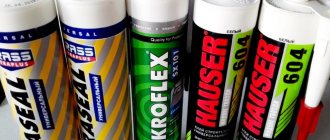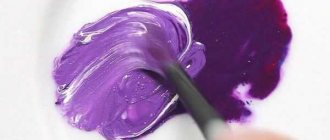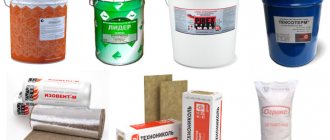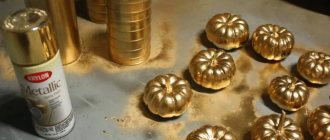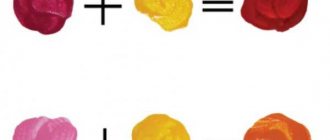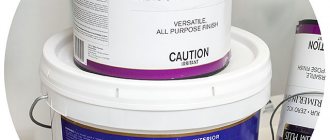Update date: 09.11.2020 14:30:45 3518 Share:
Author: Irina Rostova
*Review of the best according to the editors of simplerule.ru. About the selection criteria. This material is subjective in nature, does not constitute advertising and does not serve as a purchase guide. Before purchasing, consultation with a specialist is required.
Artistic oil paints offer unlimited possibilities in painting. With their help, it is possible to convey incredible depth of the image and any, even the most complex shades. However, you can get an impeccable result only with the right choice of material. To avoid mistakes, see the rating of the best manufacturers offering high-quality, durable and easy-to-use oil paints.
How to choose quality oil paints?
The first thing you need to pay attention to when choosing is the oil used for production. We recommend choosing artistic oil paints with linseed, sunflower, walnut or hemp oil. They provide high color fastness and therefore do not turn yellow over time.
Other selection criteria that we recommend taking into account:
- Manufacturer.
Basically, imported brands offer materials for professional artists (Winsor & Newton, Pebeo, etc.). Russian manufacturers are more often focused on beginning craftsmen.
- Format.
All manufacturers produce materials individually (in sealed tubes of different volumes) and entire sets. Full series are often cheaper, but many shades may be unnecessary.
- Light fastness.
The durability of the color, and therefore the entire work, depends on it. Resistance to light is marked with asterisks (less often with plus signs). The more there are, the higher the light resistance. We recommend paints with 2-3 stars.
- TOburrowing properties.
They indicate whether the material will cover the canvas well. Covering power is marked with squares. A white square indicates that the paint is completely transparent, a half-painted one indicates that it is a translucent material, and a black square is on paints with high opacity properties.
Which oil paints to choose for painting? — Art Studio Painting Courses
How to choose the right paints for oil painting? Perhaps this is one of the primary questions that people who start drawing ask themselves.
Today, art stores offer a large selection of oil paints from various manufacturers in a wide price range.
Let's figure out together which paints are right for you for each specific job, which colors must be present in the artist's palette, and which brands are the best in terms of price/quality ratio.
The main thing: light fastness and hiding power
Oil paints today are not just pigment mixed with oil. To increase the brightness and purity of color after drying, many manufacturers add wax, natural resins and thickeners to the paint composition. However, the main argument in favor of good coverage, intensity and light fastness of oil paint is the presence of high-quality pigment.
Pigments are inorganic (mineral) and organic. Some of them are quite rare or very expensive to produce, but they give good color. Others, on the contrary, can be widespread and inexpensive, but do not provide the desired saturation or coverage.
How do you know what kind of paint you have in front of you, opaque or transparent, with good light fastness properties or not? When choosing paint, pay attention to the symbols printed on the tubes (stars, pluses and squares).
Asterisks (some manufacturers have plus signs) indicate the lightfastness of the paint. The more “stars”, the greater the light fastness, therefore, the richness of the colors will not change over the years. One star on the tube means extremely low light fastness.
Such colors begin to lose their saturation within a year, but the brightness of the picture will remain for a maximum of 10-15 years. Two stars mark paints with average light fastness. The paintings will remain bright for almost a quarter of a century. Such paints will be a good solution for both sketches and full-fledged paintings.
If you see three stars , you know that you have the best paints. They have the highest light resistance; they retain brightness and color saturation for up to 100 years. By the way, on the whitewash you can also notice symbols in the form of asterisks. One star indicates that the white will yellow greatly over time.
Two stars means the white is medium yellowing, and three stars means it’s not yellowing at all.
Another sign that can be found on tubes is squares. They talk about the covering properties of oil paint: will it be translucent or will it “cover” the canvas well? Different covering values are suitable for different tasks. If you see a white square , then this paint is transparent.
It is well suited for creating glazes (translucent layers), which were actively used by old-school artists. If the square is half painted , it is translucent paint.
Most often, such oil paints are used to create some subtle, unique shade (as an addition to the mixed color). A black square marks paints with high covering properties (sometimes they are also called body paints).
Such paints lay on the canvas in a dense layer, and even diluted with thinner, will not become transparent. They will be a good solution for those who like to write with textured thick strokes.
Manufacturers and brands of paints
Today, the oil paint market is saturated with offers from various manufacturers from China and Russia to Europe and the USA.
Moreover, it is very difficult to evaluate them unambiguously, since each manufacturer has lines of both professional and semi-professional paints (worse and cheaper), and even very budget ones (for beginning artists).
Therefore, it makes sense to talk not only about manufacturers, but also about specific brands. Let's figure it out.
ZHK (Artistic Paints Factory, Russia) is the first on our list, since the shelves of domestic stores are “littered” mainly with its products. The Master Class brand has paints of very good quality; they can be classified as semi-professional paints.
In the manufacture of such paints, natural pigment is often used, which has good light fastness. Another line of paints from ZHK is called “Ladoga”. This brand is on the border between amateur and semi-professional paints.
The fact is that in the manufacture of such paints, artificial pigments are widely used, and only for a number of shades - natural ones. “Sonnet” is another series produced by ZHK.
It is considered amateur because the paints contain inorganic (artificial) pigments, which does not have the best effect on the covering power and light fastness of the colors.
Another domestic manufacturer producing oil paints is Moscow. Very good paints in terms of price-quality ratio. For fans, they have a "Studio" series. There is also a line of semi-professional paints “Old Master”.
Among Russian manufacturers, it is also worth remembering Podolsk Products for Artists LLC, which produces a line of amateur paints.
Now "foreigners". The German company Schmincke is one of the legendary oil paint manufacturing companies. These paints are some of the highest quality and most expensive in the world.
The Mussini series is a line of professional paints that technologically recreate the “oils” of the Renaissance.
The Norma Oils series paints can be considered semi-professional; they are distinguished by their high brightness and saturation.
The English company Winsor&Newton has been producing materials for artists for more than 170 years. The oil paints of this company are made from the best raw materials, which ensures amazing color purity.
An example of this is the “Artists” series, appreciated by professional artists from all over the world. The class below are Winton oil paints, in the production of which both natural pigments and their synthetic substitutes are used.
Finally, for beginning artists, Winsor & Newton created the “Artisan” line of paints. These paints are no different in their properties and external characteristics from traditional oil paints, however, water can be used as a thinner.
Thanks to this, the drying time of the paints was significantly reduced.
Another English company with a rich tradition in the production of oil paints is Daler Rowney . The series of professional paints includes the Artists brand.
Oil paints in this series are made with the maximum content of high-quality pigments, poppy and linseed oils.
But the Georgian line of paints, due to the replacement of natural pigments with imitation ones, belongs to the amateur series.
The next manufacturer is the Italian company Maimeri . The paints are of high quality and do not turn yellow when dry. The color palette contains many interesting shades. Two series can be classified as professional: Maimeri Puro and Artisti.
The first is distinguished by the maximum possible pigment content in the paints, as well as the base of non-yellowing oils - poppy and wild saffron. But the Artisti line of paints was created in the traditional way. Another series of paints is called Classico - this is an amateur series.
Here, artificial pigments are used in production, which replace natural mercury, cobalt and cadmium.
The Italian factory Ferrario also sought to create products that could satisfy the diverse needs of artists. A line of ultra-thin Da Vinci oil paints was created for professionals.
These paints are distinguished by maximum light fastness and consistency of color tone over time. Van Dyck is a brand of semi-professional paints, consisting of 91 shades, including 6 metallic shades.
A good option in terms of price/quality ratio, however, you should know that some natural pigments here have been replaced with synthetic ones. One of the most interesting inventions of the Ferrario company is the Rapid series of quick-drying paints.
When creating them, vegetable oils and synthetic resins were used, due to which the drying time of the paint layer was reduced to 30-40 hours. Such paints can be considered amateur, just like the Oil master series.
The French company Lefranc&Bourgeois is a significant player in the paint market with more than centuries-old traditions. For professionals, the company produces premium oil paints under the Lefranc brand.
The paints in this series are characterized by very fine grinding and a high degree of pigmentation. And in the color palette you can even find several glossy and metallic shades.
The Louvre line of oil paints is a set of amateur materials with a well-chosen color range at an affordable price.
Another French company whose paints can be found in Russian stores is Pebeo . Two lines of paints have been developed for painters.
The first is the professional Fragonard series, which has 98 colors in its palette. To create it, linseed oil and high-quality pigments with maximum light resistance and color purity are used.
The second series is called XL and is intended for beginning artists.
The Dutch company Old Holland is one of the oldest paint factories. In the production of oil paints, recipes and technologies from the 16th century are used, including many processes performed by hand. For production we use pure, cold-pressed linseed oil, bleached in the sun.
Old Holland paints do not contain powdered fillers such as chalk, barium sulfate, aluminum hydrate and wax, so the paints have good hiding power, light fastness, color saturation and purity.
Old Holland paints are materials for professionals, so they are often used in the restoration of paintings by old masters.
The American company Gamblin was born in 1980, but has already managed to win the respect of many artists.
In the production of Gamblin paints, various types of pigments are used, from earthen pigments known since ancient times to modern organic and inorganic ones.
For professionals, the factory produces the “Artist's Oils” series, and a lower class is the “Gamblin 1980” series, where calcium carbonate is used instead of the usual gels and waxes.
Summary. Sets or individual tubes?
So, we already know that the main criterion influencing the price/quality ratio is the chemical composition of paints, or rather, the origin of the pigment and the quality of linseed (poppy) oil.
Paints with natural pigments will always cost significantly more than their synthetic substitutes.
However, such parameters as light fastness, purity and color saturation, as well as hiding power will differ significantly in favor of natural paints.
“What colors to choose and how many should there be in the palette?” is a natural question for many novice artists. To begin with, you should not buy a large amount of paints. It is enough to purchase a set of 8-10 basic colors.
This can be a ready-made set consisting of small tubes, or you can choose the paints you need in large tubes yourself. It is important that you have paints of the following colors: blue (ultramarine or cobalt), red (cadmium or kraplak), yellow (cadmium and ocher), green (cobalt or emerald), white (zinc or titanium white).
If you already know how to mix primary colors and get additional ones from them, then even this minimum will be enough for you.
In the future, of course, it is worth enriching your arsenal with a number of more shades.
You can, of course, mix them from the base colors you have, but achieving the same color purity and saturation that paint manufacturers achieve in industrial settings is almost impossible.
In addition, having gained initial experience in painting, you will already understand how quickly you use up certain paints and will probably want to try new brands. Then it’s worth going to the store, making your choice more consciously.
Rating of the best manufacturers of artistic oil paints
| Nomination | Place | Name | Rating |
| The best manufacturers of oil paints for professionals | 1 | Winsor & Newton | 5.0 |
| 2 | Lefranc & Bourgeois | 4.9 | |
| 3 | Daler-Rowney | 4.8 | |
| 4 | Pebeo | 4.7 | |
| 5 | Maimeri | 4.6 | |
| 6 | Royal Talens | 4.5 | |
| 7 | Ferrario | 4.4 | |
| 8 | Schmincke | 4.3 | |
| 9 | Da Vinci | 4.2 | |
| Best Inexpensive Oil Paint Makers for Beginners | 1 | Master Class | 5.0 |
| 2 | Nevskaya Palitra | 4.9 | |
| 3 | Gamma | 4.8 |
The best manufacturers of oil paints for professionals
Winsor & Newton
Rating: 5.0
The first place in the ranking is occupied by artistic oil paints from Winsor & Newton (England). They are made from the best raw materials, so they give beautiful pure colors. All shades are easily mixed with each other. The main advantage is the rich palette, including 120 shades. They are saturated and have high hiding power, so they completely cover the surface.
Judging by the reviews, they are very convenient to work with. However, only imported thinners are suitable for their use. The main advantages include durability and lightfastness of colors. According to information from the manufacturer, they remain in their original form for more than 200 years. The materials are available in separate tubes of different sizes or sets (for example, GALERIA).
Advantages
- Different formats;
- Wide palette;
- Rich shades;
- High hiding power;
- Affordable price.
Flaws
- Requires the use of only imported thinners.
Lefranc & Bourgeois
Rating: 4.9
The main advantage of Lefranc & Bourgeois (France) artistic oil paints is their finely dispersed high-quality pigments. They provide light fastness and color intensity and also contain mineral and organic particles. Paints are available in the Lefranc and Louvre series for painting in different formats. Range
Reviews say that the paints of this brand are easily compatible with each other. It’s convenient that you can adjust their consistency, adding depth, transparency and shine. They are available in different volumes: tubes of 20 ml, 40 ml, 60 ml and even 250 ml. They fit correctly on the canvas, dry quickly, and are compatible with different surfaces. A versatile choice at an affordable price.
Advantages
- High-quality pigmentation;
- Various volumes to choose from;
- Lightfastness;
- Comfortable consistency;
- Versatility.
Flaws
- Not found.
Daler-Rowney
Rating: 4.8
Soft velvety consistency and high quality pigment are the main features of Daler-Rowney (England) artistic oil paints. They have maximum light resistance because they contain refined linseed oil. Universal, therefore suitable for all working techniques. The drying time of the paint layer is 4-5 days.
The entire color palette of the brand is perfectly balanced. It includes different shades, including transparent and opaque. Many of them are single-pigment, so they allow you to get the purest color possible. Available in individual tubes (37 ml) and whole sets. Easily squeezed out and quickly mixed on the palette.
Advantages
- High quality;
- Lightfastness;
- Ease of mixing;
- Maximum purity;
- Soft consistency.
Flaws
- Long drying time.
Pebeo
Rating: 4.7
We added the Pebeo (France) brand to the rating because it offers highly artistic paints with maximum color purity and uniform texture. Particularly popular is the Fragonard line, made using natural linseed oil and characterized by good light resistance.
Reviews say that they dry quickly and apply evenly to the surface. They allow you to get a shade of any intensity: from pale to the most saturated. The density and relief of the image can be easily changed. It’s convenient that after drying you don’t have to cover the work with varnish. Available tube sizes: 12 ml, 20 ml and 37 ml. You can order sets of 10, 12 and 20 pcs.
Advantages
- Quick drying;
- Each tube is hermetically sealed;
- Ease of use;
- Uniform application;
- Uniform texture.
Flaws
- Not found.
Maimeri
Rating: 4.6
The main feature of Maimeri artistic oil paints (Italy) is that they do not turn yellow when dry. All brand products are intended for professional artists, are of high quality and are produced in different series. For example, the ARTISTI series offers more than 100 pure shades with fine texture, as well as thinner and synthetic brushes.
Sets from this Italian manufacturer are in great demand because they are produced in original cases made of natural wood. However, their cost is very high, so not every artist can afford to work with this material. Individual tubes are available in different sizes: 15 ml, 20 ml and 60 ml, and 500 ml cans are also sold.
Advantages
- Various volumes;
- Original Series;
- Fine, uniform textures;
- High quality pigment;
- Thick consistency.
Flaws
- High price.
Royal Talens
Rating: 4.5
We added Royal Talens (Holland) brand products to the rating because they contain the purest pigments and are developed using an innovative formula. This ensures high purity colors as well as maximum durability and light fastness. An excellent choice for professional artists.
Reviews say that the tubes from this manufacturer are very good and durable, and the lid closes perfectly. All colors mix easily and predictably with each other, lie softly on the canvas, and are therefore pleasant to use. The consistency is medium, so you can work without using a solvent. When dried, the result does not change.
Advantages
- Good saturation;
- Convenient caps;
- ASTM D4236 Safety Certificate;
- Durability;
- There is almost no specific smell during operation.
Flaws
- Pigmentation is below average;
- High price.
Ferrario
Rating: 4.4
If you are looking for paints with a good price-quality ratio, we recommend products from the Ferrario brand (Italy). They are made using natural and synthetic pigments. They have good light and heat resistance. They dry quickly, but do not turn yellow or fade, since modern technologies are used for their production.
Suitable for working with different surfaces. Judging by the reviews, many people use canvas, cardboard, natural wood, particle board (chipboard), etc. A big plus of the material is its elasticity. This reduces the likelihood of cracking of the paint film and allows you to safely transport paintings without worrying about their safety.
Advantages
- Various series;
- Universal tubes of 60 and 150 ml;
- Elasticity;
- Fast drying.
Flaws
- Some shades are not highly saturated.
Schmincke
Rating: 4.3
The legendary brand Schmincke (Germany) produces several series of oil paints. Particularly popular is the Mussini line, which includes 108 shades and is made on the basis of Mussini resin. This ensures excellent miscibility of materials, and also guarantees their light and heat resistance. They are durable and do not change after complete drying.
All series from this manufacturer are distinguished by consistently high quality and uniform textures. They are made from finely dispersed pigments and natural oils. They have increased shine and clear tone. Other series from the German manufacturer that we recommend to professional artists: Norma Professional and Akademie Oil Color.
Advantages
- Fine pigmentation;
- Various series for professionals;
- Increased shine;
- Durability;
- Heat resistance.
Flaws
- High price.
Da Vinci
Rating: 4.2
The main advantage of ultra-fine oil paints Da Vinci (Germany) is maximum light resistance. We added them to the rating because they dry very quickly (1.5-3 days) and retain their original shade even after a long period of time. Ideal for use with a palette knife.
Many people write that these are the most convenient paints. They have a uniform texture, so they lie evenly on any surface. Available in sealed tubes (35 ml) individually and in sets. Together with them, we recommend that you immediately buy synthetic brushes from this brand, which are very popular among artists from all over the world.
Advantages
- Quick drying;
- Bright natural pigment;
- Accurate and uniform application;
- Working with different surfaces.
Flaws
- High price.
Oil paint testing
Comparison of oil paints Master Class, Ladoga, Daler Rowney, Maimery Classico. Today in the Art Quarter there is a fairly large selection of paints from different manufacturers, and of course, they behave differently in work. Oil paints Ladoga Paints are very popular among professionals and amateurs due to their availability. The palette includes 54 colors, of which 19 colors are made using analog pigment. Typically, the cost of certain paint colors depends on the pigment used to make them. Traditionally, cadmium and cobalt pigments are considered the most expensive and difficult to obtain, so they are replaced with analogues and are designated on the tube with the letter “A”. These paints mix well with each other and have a thick consistency, which is convenient when working with a palette knife. But they also have a number of disadvantages: all analog pigments have lower light fastness (** or *), which affects the durability of the work. And when mixing 3 or more colors they give dirtier shades. Buyer's opinion. Victor Cheremukhin (artist-teacher): “I tried your ETUDE paints and bought a set of Sennelier “ETUDE” oil paints. I am very pleased with the quality and plasticity of the paints. It’s a pleasure to work with them, thank you very much for the opportunity to try and find your own!” Oil paints Master Class The brand chosen by many professionals. The palette includes 84 colors, 83 of which are made from natural pigment and have fairly good light fastness. The paints mix well with each other and give fairly clean mixtures. They have a thick consistency and are suitable for working with a palette knife. Buyer's opinion. Lyudmila Ivanova (amateur): “I use Ladoga paints.” Sometimes I'm happy, sometimes I'm not. It happens that the tube is full of some kind of liquid that has separated from the oil, and sometimes the tube is so oak that it can only be used to hammer nails. I tried your colors. I liked “Etude”: how they behave and the price is nice. I’ll buy it for myself as a gift.” Oil paints Daler Rowney “Georgian” The English brand is not widely represented in Russia, but it has long been loved by our artists: both professionals and amateurs. The palette has 54 colors, which include several types of white, as well as interesting colors that are not available from domestic manufacturers. The peculiarity of this paint is its creamy consistency and increased pigment content in comparison with domestic manufacturers. The paints have a good price-quality ratio, one price for all colors and a larger tube of 75 ml. They have good light fastness, produce clean mixtures and are well distributed over the surface due to more thorough grinding of the pigments. Ideal for glazes, and at the same time easily thickened with the help of mediums. It is convenient to choose colors according to the palette, so a closed tube is not a disadvantage in this case. Buyer's opinion. Yulia Sinyavina (regular customer of Art-Kvartal on 2nd Sovetskaya): “They have such a pleasant texture and mix perfectly. I advise you to try it, everything will become clear right away. Then you don’t even want to buy others!” Oil paints Maimery "Classico" This is a well-known Italian brand, which is preferred by many professional artists. The palette has 77 colors, including several types of white and unique colors not offered by other manufacturers, for example, 2 shades of gold and silver. They are made with the addition of safflower oil, which adds light resistance to light tones of paint. They have a high concentration of pigment, which makes them quite economical to use. They have good light fastness, produce clean mixtures and are well distributed over the surface. The paints have an optimal price-quality ratio, the same price for all colors in a large-volume tube - 60 ml. Well suited for both glazing and palette knife work. Opinions of buyers Ivan Berkutov (professional artist): “I bought red paint “Ladoga” when I was still starting to paint, and it pours out of the tube, half the cost of the paint has already poured out. And I tried the same Italian one from you, so you can feel the difference right away. I spent money once, but I finished the whole picture and still have some left.” Elena Voznesenskaya (high school teacher): “I like the oil paint “Classico” from the MAIMERI brand, Italy. You have a large assortment of them, and they mix well, do not fade, and have good plasticity. I’ve been writing with them for a long time, but then I had the chance to compare them with others - my opinion hasn’t changed!” Ekaterina Ivanovna Selezneva (university teacher): “These “Classico” are simply super, there is so much pigment that you use the paint very sparingly, they are bright, lively and... expensive...”
Best Inexpensive Oil Paint Makers for Beginners
Master Class
Rating: 5.0
(Russia) produces good quality paints. Part of the palette is represented by shades with organic pigmentation, so their main advantage is high light resistance. The basis of a number of colors is natural linseed oil, which prevents them from yellowing. Good for hobbies, learning and sketching.
Many are mono-pigments, thanks to which it is possible to obtain a pure and long-lasting shade. They mix well and do not require the painting to be coated with varnish after completion of the work. Available in individual tubes of 46 ml, as well as in sets of 6, 8 and 12 pcs. Conveniently, they can be used for restoration work.
Advantages
- You can get any shades;
- Suitable for basic and restoration work;
- Wide palette;
- Do not change when dried;
- They have no smell.
Flaws
- Do not mix with materials from other manufacturers;
- Some are too thick.
Nevskaya Palitra
Rating: 4.9
If you are looking for inexpensive paints that do not fade over time, we recommend products from (Russia). Despite the affordable price, they have rich and beautiful shades. Available in convenient packaging: individual tubes or in sets. The most popular series is “Ladoga”, the palette of which includes more than 50 shades.
An excellent choice for beginner artists who are learning and want to choose an inexpensive material to start with. As for the disadvantages, one of them is an unpleasant specific smell, so we recommend working only in a well-ventilated area.
Advantages
- Easy to work with;
- Dries quickly;
- Wide palette;
- Various series, including the popular in Russia “Ladoga” and “Sonnet”.
Flaws
- Low light fastness;
- Strong unpleasant odor;
- Poor mixability.
Gamma
Rating: 4.8
The rating is completed by products from (Russia). It is presented in tubes and sets of three series: “Studio”, “Moscow Palette” and “Old Master”. The former are among the most popular in Russia because they imitate the cadmium-cobalt group of pigments and are environmentally friendly.
Reviews say that they dry quickly and do not crack. However, some fade and even fade after a few years. A good choice for beginning artists. They help you study strokes, master the basic rules of combining and selecting shades. They have medium coverage, so they do not cover the surface from the first application.
Advantages
- Fit well;
- Affordable price;
- Do not crack over time.
How to choose oil paints for painting
" News
Articles Loading...
If every time you see a gorgeous oil painting, you freeze and catch yourself thinking that you WOULD LIKE to be able to do that too - it’s time to pick up a brush!
The impossible will become possible! The first step is already waiting for you in my article - https://nyblog.ru/kak-nauchitsya-risovat-maslom-s-nulya/.
We will learn how to select materials and how much they cost, what the first strokes should be, WE will DRAW a picture together and even figure out how to sell it!
All this is free using the link above)
Nowadays, when there are so many colors on store shelves that your eyes run wild from the choice and variety, it can sometimes be difficult to decide which ones you need. What do all these icons on the labels mean, and why “Master Class” is better than “Ladoga”, read in this article.
- Characteristics of oil paints
- How to choose the best oil paints
- Which manufacturers of artistic oil paints are best to choose?
- Master Class
- Sonnet
- Ladoga
- Podolsk goods
- How to understand that the chosen oil paint is bad
Choosing oil paint
The criteria for choosing oil paint are based on technical characteristics, which you can ask the seller or read on the packaging.
- Volatile substances are responsible for the pungent aroma after using paint. The proportion of substances should not be higher than 10%.
- Film-forming substances are responsible for the density of the composition. The denser the concentration of oil paint, the stronger the coating adheres. The proportion of substances is above 25%.
- The smoothness of the coating is determined by the graininess of the paint particles. For a smooth coating, look for a parameter above 90 microns, for a fine feeling fraction - below 90 microns.
- The viscosity index of the composition determines the ease of application and work with the paint. Comfortable viscosity for working with oil paint is in the range of 60-140 units.
- Drying speed will tell you the time it will take to completely dry the coating.
- Traditionally, paint packaging indicates the approximate paint consumption per square meter. The consumption is approximate, since much depends on the degree of preparation of the base for painting, the chosen color and the skills of the painter.
Choosing oil paints for painting
The issue of selecting oil paints for painting worries both professional artists and beginning artists. When you come to the store, you come across a large assortment of this product and don’t know what to buy, what colors to choose, which oil paints are better for painting, whether to buy large or small tubes, and so on.
What's on the counter:
Experts recommend selecting materials for work based on what you will write and on what scale. Knowing what types of oil paints there are will not be superfluous. And they come in three types:
- highly artistic (natural),
- studio (imitation),
- sketches (analog).
The first group is expensive, light-resistant, with pure tones, samples made with high-quality oils and pigments. This is a professional series. Next in cost and quality come studio paints. They are made on the basis of linseed oil and compositions that imitate cadmium and cobalt pigments.
They are quite lightfast, with decent covering properties and a highly dispersed base. The last - sketch - group is created on the basis of inexpensive synthetic components. It is suitable for beginning artists and for works performed in large volumes.
The disadvantage is unpredictability when mixed - unexpected, dim shades are obtained that change over time.

